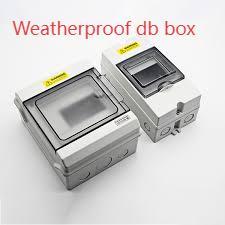In the field, a well-chosen enclosure can make the difference between reliable service and frequent maintenance. Installers often evaluate the Weatherproof db box in terms of access and protection, and designers consider the Weatherproof db box when specifying long-term outdoor installations. This article explains why rugged enclosures matter, how they are used across different contexts, and what to consider when integrating such solutions into broader systems.
Why enclosure design matters
A durable enclosure protects critical electrical and electronic components from moisture, dust, and accidental impact. Thoughtful design reduces the chance of malfunctions and extends the service interval of field equipment. Well-designed enclosures also simplify installation and maintenance, making it easier for technicians to perform diagnostics and repairs without compromising protection. When an enclosure is chosen to match environmental conditions, it becomes a practical investment rather than a cosmetic detail.
Key considerations for selecting outdoor enclosures
Selecting the right enclosure involves balancing multiple priorities: longevity, ease of access, compatibility with internal components, and serviceability. Designers must consider how cables enter and leave the box, how internal fixtures are mounted, and how the unit will be secured against tampering. Attention to sealing and ventilation reduces the risk of water ingress and internal condensation—common causes of premature failure. Thoughtful planning at the specification stage avoids costly retrofits later.
Installation and maintenance best practices (Nante)
Careful installation practices are as important as the enclosure itself. Position units to avoid pooling water, ensure cable glands and entry points are properly sealed, and verify that internal components are mounted with appropriate isolation where vibration is expected. Regular visual inspections and scheduled checks help identify seal degradation or mounting issues early, preventing small problems from becoming service interruptions. Training field technicians on common failure modes and straightforward diagnostic steps also improves long-term reliability.
How enclosures support broader system goals
Beyond component protection, enclosures contribute to system-level objectives such as operational efficiency and sustainability. By reducing failure rates they lower the frequency of repair trips and spare-parts consumption. Standardized enclosures simplify inventory management and allow teams to apply consistent maintenance practices across multiple sites. In this way, a well-specified product supports resilience and cost-effectiveness across a network rather than functioning as a single, isolated item.
Design trends and emerging practices
Recent developments emphasize modularity and integration. Designers increasingly favor enclosures that accept plug-and-play modules, allow easier retrofits, and support condition monitoring devices. These trends let operations teams upgrade functionality without replacing entire cabinets, preserving capital while enabling added capabilities. Advances in materials and sealing technology also broaden options for lightweight yet robust solutions that are simpler to transport and mount in the field.
Final thoughts
Choosing the right outdoor enclosure is a systems decision, not just a component choice. When design, installation, and maintenance are aligned, rugged enclosures provide dependable protection and contribute to lower total cost of ownership. Simple measures—proper siting, correct sealing, and routine inspection—often eliminate the majority of field failures. For those seeking product information and specifications, please visit www.nante.com/product/ .

